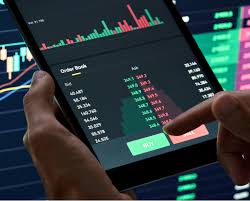Mastering Trading Crypto Indicators for Better Decision Making

Understanding Trading Crypto Indicators
In the dynamic world of cryptocurrency, making informed decisions is critical. One effective way to enhance your trading strategy is by employing Trading Crypto Indicators http://www.recursosanimador.com/scripts/librovisitas2.php?pagina=9788. These tools can help you analyze market trends, gauge the momentum of price movements, and make predictions based on historical data. This article provides an in-depth overview of the most essential trading indicators you should integrate into your trading arsenal.
What Are Trading Crypto Indicators?
Trading indicators are mathematical calculations based on the price, volume, or open interest of a security. In the context of cryptocurrency, indicators help traders identify trends and make predictions about future price movements. While there are numerous indicators available, they can generally be categorized into two main types: trend-following indicators and oscillators.
Trend-Following Indicators
Trend-following indicators are designed to identify and confirm existing market trends. These indicators help traders determine whether a cryptocurrency is in a bullish (uptrend) or bearish (downtrend) phase. Here are some of the most popular trend-following indicators:

- Moving Averages (MA): One of the simplest and most commonly used indicators. A Moving Average smooths out price data to create a trend-following indicator. Traders often use the 50-day and 200-day moving averages to determine potential buy or sell signals.
- Exponential Moving Average (EMA): Similar to the MA, but gives more weight to the most recent prices. This makes EMAs more responsive to new information, making them ideal for identifying trends in smaller time frames.
- Average Directional Index (ADX): This indicator measures the strength of a trend, whether up or down. An ADX value above 20 suggests a strong trend, while a value below 20 indicates a weak trend.
Oscillators
Oscillators are indicators that fluctuate between a predetermined range, often between zero and 100. They are particularly useful in identifying overbought or oversold conditions. Here are a few essential oscillators:
- Relative Strength Index (RSI): This momentum oscillator measures the speed and change of price movements. An RSI above 70 typically indicates an overbought condition, while an RSI below 30 suggests an oversold condition.
- Moving Average Convergence Divergence (MACD): This indicator tracks momentum by showing the relationship between two moving averages. MACD includes a ‘signal line’ that can generate buy or sell signals when the MACD crosses above or below it.
- Stochastic Oscillator: This compares a particular closing price of a cryptocurrency to a range of its prices over a certain period. The stochastic oscillator produces a value between 0 and 100, which helps traders identify potential reversal points.
Combining Indicators for Effective Signals
Using multiple indicators can enhance the reliability of trading signals. For example, combining the RSI with MACD can help confirm whether a potential trade is supported by multiple perspectives. Traders often look for ‘confluence’ among indicators, where several tools indicate the same buy or sell signal, thereby increasing the likelihood of a successful trade.

Risk Management with Indicators
While trading indicators can significantly aid in decision-making, they are not infallible. Risk management is crucial in trading, and indicators should not be the sole basis for your trading strategy. Implementing stop-loss orders, diversifying your portfolio, and defining clear risk-reward ratios are essential practices that can help mitigate potential losses.
Choosing the Right Indicators
The best indicators largely depend on your trading style, risk tolerance, and the specific cryptocurrency you are trading. Day traders may prefer shorter time-frame indicators like EMAs and RSI, while longer-term traders could benefit from MAs and ADX. It’s important to backtest indicators with historical data to gauge their effectiveness before applying them in live trading scenarios.
Conclusion
Trading crypto indicators are invaluable for both novice and experienced traders. By mastering these tools, you can enhance your ability to analyze market trends, predict price movements, and ultimately make more informed trading decisions. Remember that successful trading also incorporates sound risk management practices and the ability to adapt your strategies as market dynamics evolve. Start exploring different indicators, combine them wisely, and watch as your trading skills flourish in the exciting world of cryptocurrency.
